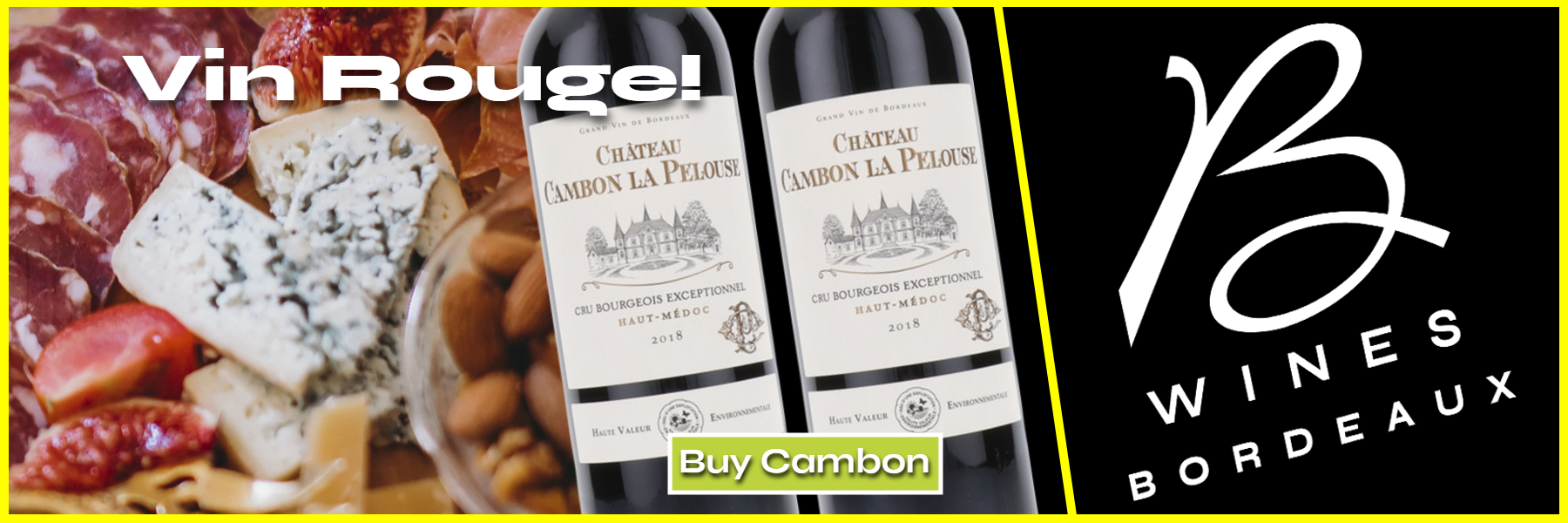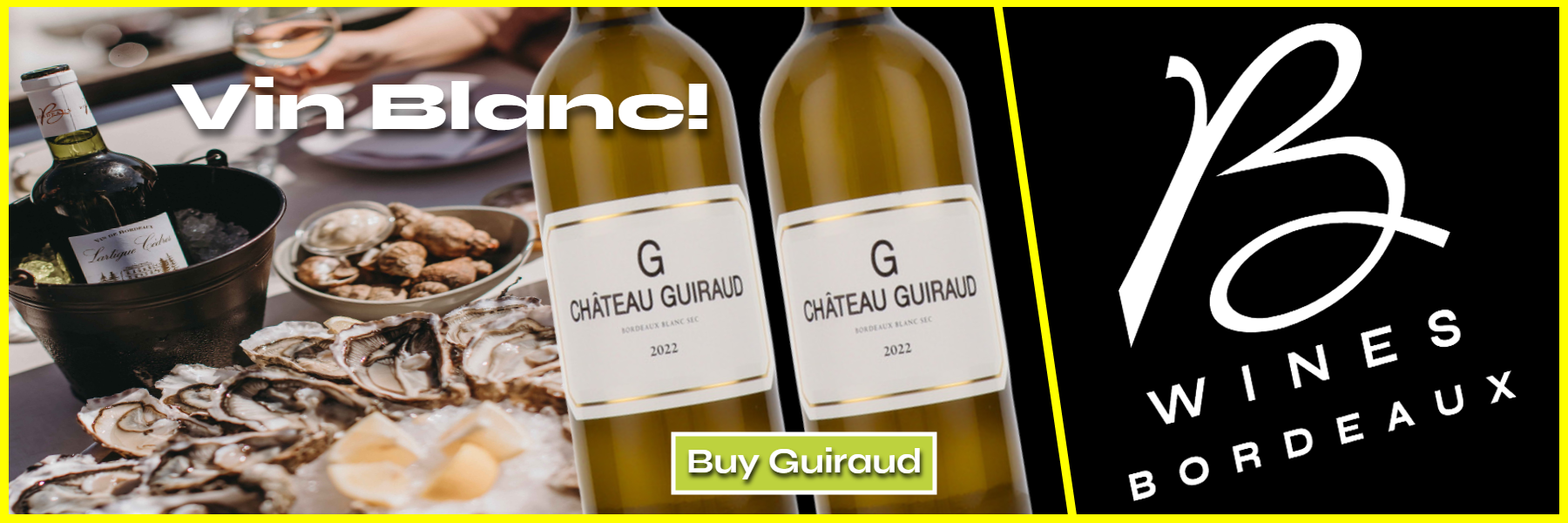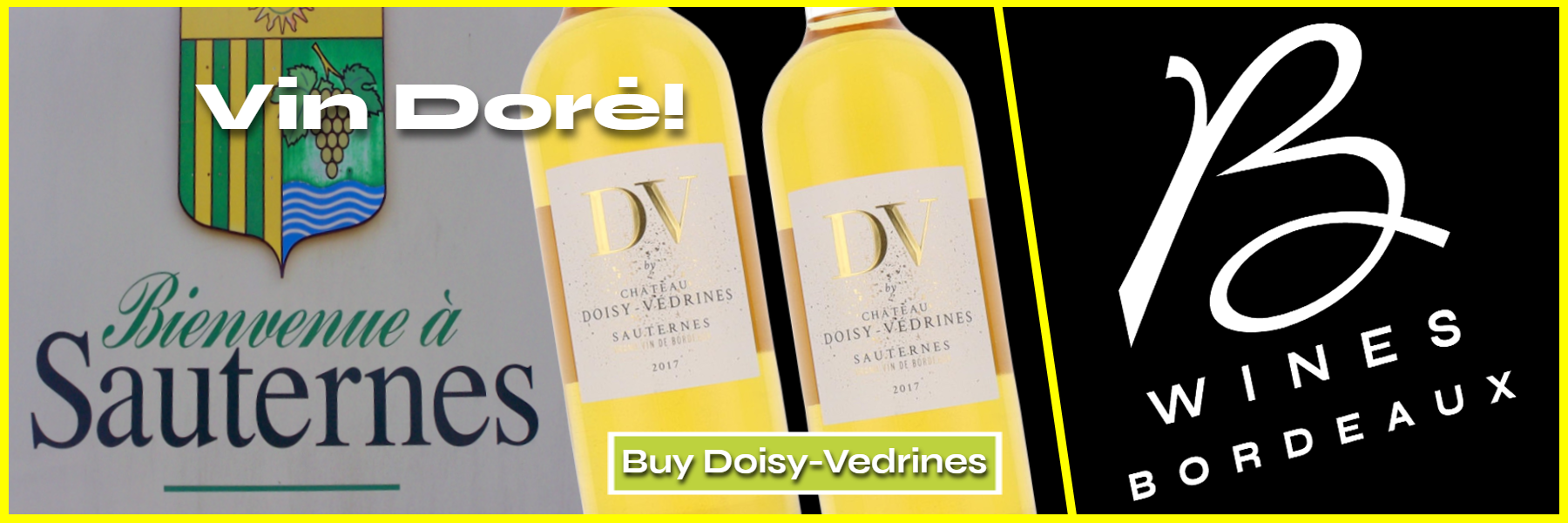Did you know that, before all the great Chateaux, the northern-most part of the region of Bordeaux was a swamp? Absolutely true! It was the Dutch who, in the 17th century, with their experience in Holland, were brought in to "drain the swamp" and reclaim the land for agricultural use. The Medoc has never been the same since then and one of the world's foremost wine regions began its inexorable rise to prominence with the first plantings of vines on the gravel outcrops along the banks of the Gironde estuary.
Bordeaux currently has the largest area under vine (103,200 ha) in the whole of France. That's more than twice as much as the Loire and nearly twice that of the Rhone.
With red wine production dominating (84%), dry whites (8%), rosé (4%), sweet wines (2%) and crémant sparkling (2%), there's something for everyone... but it helps if you prefer reds!
When it comes to the grapes you'll find planted here it's all about the "top 3" with a few hangers-on. Merlot makes up two thirds of production, Cabernet Sauvignon is around a fifth (22%) with Cabernet Franc bringing up the rear with close to 10%. Also rans include Petit Verdot, Malbec and Carmenere. These last three, although making up a tiny proportion of vineyards, are now becoming much more popular with growers. Bordeaux is actually the world's greatest grower of the Merlot grape variety and a considerable volume of it ends up in the glasses of British consumers and connoisseurs.
Some of the world's best red wines are made in Bordeaux, both the "left bank" Medoc (based mainly on Cabernet Sauvignon) and "right bank" St. Emilion & Pomerol (based on Merlot or Cabernet Franc) are wines to explore. These are capable of ageing for many decades and, even with the vast choice available on today's market, they are wines which really need to be experienced by more people. Oh, but the prices asked by the top chateaux are prohibitive for many of us. Myself, included. Lesser known appellations can offer good value from up-and-coming winemakers looking to get established in the area and the Cru Bourgeois chateaux of the Medoc itself are a bargain when compared to the Grand Cru Classé and may be found in the £20-£30 price bracket.
Although white wine production is considerably lower than that of red, the grapes planted still make an important contribution to the region's wines. With almost equal volumes of Semillon and Sauvignon Blanc planted (for dry & sweet wines), these "top 2" make up nearly 90% of white Bordeaux. The remainder uses an eclectic mix of Muscadelle, Sauvignon Gris, Colombard, Ugni Blanc, Merlot Blanc, and Mauzac.
Most dry white made in Bordeaux tends to be unoaked Sauvignon Blanc, sometimes being blended with a splash of Semillon. Generic Bordeaux Blanc, Entre-Deux-Mers and Graves fall into this category with the wines of Pessac-Leognan being more complex and likely to be barrel fermented. Like their red counterparts, these are appreciated when given up to a decade of further cellar ageing. Perfect with the locally caught Gironde oysters.
When looking for something unique from Bordeaux, in my opinion, nothing can surpass the golden delights of Sauternes and Barsac. Supremely rich, sweet and opulently textured, the grapes needed to make this heavenly nectar are affected in the autumn months by the fungus known as "Noble Rot" (Botrytis Cinerea). It may look absolutely disgusting, but the magic it creates in the flavours produced outweighs the incredibly hard work needed to make the wines. Usually picked by hand, bunch by bunch (sometimes, grape by grape) with multiple passes (tries) through the vineyard, these are wines to be consumed well chilled alongside your favourite juicy, summer berries.
I have to mention a very recent bottle I opened. It was a 2010 Chateau Coutet Sauternes-Barsac. A blend of 75% Semillon, 23% Sauvignon Blanc and 2% Muscadelle, the cork broke up trying to open the bottle which didn't inspire me with confidence about drinking it. But no matter, it turned out to be fine after filtering out the bits of crumbly cork which had dropped into the bottle. Decadently rich and waxy on the palate with flavours of honey and over-ripe tropical fruits. Then I set to work on the strawberries (English, of course) and the combination was outstanding. Please note, I left some of both in the fridge for another go tomorrow. If a "swamp" can produce wines like this, then I want some more. The 2009 and 2013 vintages of Coutet are available to buy here from Frazier's.
The Borderlais are definitely going down the "green" route with much planting of trees (including various fruit trees) and hedges to encourage biodiversity in the vineyards, with better soil & water management and beneficial organisms which are useful in controlling vine pests. Many chateaux are also incorporating beehives to help with vine pollination. Of course, they do also get to make some delicious honey in the process!
With around 500 million bottles produced in an average vintage, it's good to see that there's now around 25% of the vineyards being farmed organically and 75% are now using some form of sustainable farming or environmental certification. This has seen a massive jump over the last ten years, so, if you're a "tree-hugging", "planet-saving" kind of wine drinker, you're going to love Bordeaux. Here at Frazier's, we particularly enjoy the TASTE of the wine! With the effects of "global warming" we're already beating the French at their own game with superb English sparkling wines outperforming many a Champagne (where it's getting too hot to keep the necessary high acidity and low alcohol levels in their base wines) and, in time, you might well see some "Brummy Claret" with 100 points from the world's wine critics. I can't wait to see if it happens.
Of all the wine made in Bordeaux, the French drink just over half of it themselves, with the rest being sent abroad to welcoming customers.
Britain, a long-time fan of "Claret", is currently in fourth place in the league table for Bordeaux exports, with Belgium in third, USA in second and China taking pole position. With the exception of Belgium, it's almost repeating the recent Paris Olympics medals' results. It's the sort of question you might hear being asked at a very "nerdy" pub quiz.
Want to hear a story? Yes? Then, let me begin...
I can confirm that in the early 2000s a huge amount of Chateau Lafite Rothschild ended up in Hong Kong, with everyone and their dog buying it for a "friend" who was probably in mainland China where it was almost impossible to obtain legally. At the time, it was perfectly legitimate/legal to ship "tax-free" to someone in Hong Kong, but I did hear dubious stories concerning lorry loads of cabbages carrying hidden cases of fine wines making their way surreptitiously to the mainland, bypassing the horrendously high import taxes. If the Chinese shipper/smuggler got caught, it was prison time... big time!
Regarding China's insatiable demand for fine Bordeaux, they also have a reputation for faking bottles for sale in their own country. At one point, it was claimed, the number of fake Lafite bottles in China far exceeded the chateau's entire production... and they make thousands of cases of wine every year. Buyer beware, if your bottle turns out to have come from the Chinese market place.
In the past, I have personally come across fake bottles in the UK with a 1977 dated cork which didn't match the claimed (100 point rated) 1982 vintage on the label. It was spotted because the capsule style didn't match the real design used on the later (much more expensive) vintage, so the wine wasn't sold. Some dodgy crooks even stole empties from restaurant waste bins so they could re-use a genuine bottle which was then filled with a much cheaper wine and tidied up with a new, copy capsule. If you weren't a regular drinker of the genuine article, you'd probably never know that your "Lafite" was really only a generic Pauillac. Close enough to fool most people, but only costing £20 instead of over £2000. Clever, but very disreputable. A quick way to make thousands of pounds if they'd been successful.
China has also invested heavily in the purchase of various chateaux around Bordeaux with much of the wine becoming reserved for their own market, so hopefully the international banks and insurance companies owning many of the Cru Classé properties won't sell up. Can you imagine not being able to buy your favourite bottle anywhere in Europe? Investment in the chateaux is good, but not if it restricts access to the wines for most of their original customer base.
What about the future for wine in Bordeaux?
It's a world-renowned wine region with centuries of history behind it, so everything should be rosy, but nothing is guaranteed these days.
With changes to the growing conditions and vintage variations affecting the vine crop it was decided, in 2021, to authorise the use of 6 new grapes within Bordeaux for "Bordeaux" and "Bordeaux Superieur" AOP wines. Only 5% of the property's plantings can use these grapes, and only 10% of the final blend may contain them. Naming the varieties on the label is not permitted, but these are the vines which are now allowed to be planted :
1/ Arinarnoa - a red crossing of Tannat & Cabernet Sauvignon
2/ Castets - a long forgotten Bordeaux/South West red variety
3/ Marselan - a late-ripening, red crossing of Cabernet Sauvignon & Grenache found in the south of France
4/ Touriga Nacional - a very late-ripening red variety of Portuguese origin
5/ Alvarinho - a very aromatic white variety (Spain's Albarino)
6/ Liliorila - an aromatic white crossing of Baroque and Chardonnay.
Selection criteria needed to be met for the inclusion in the 10 year experimental grape selection:
1/ Red and white grape varieties that are not emblematic of other wine regions (e.g. Syrah, Pinot Noir & Chardonnay which are grown in the Rhone & Burgundy).
2/ Varieties to be already listed in the "Official Catalogue of Vine Varieties"
3/ Vitis vinifera grape varieties.
4/ Ability to resist water stress.
5/ Aromas close to existing Bordeaux styles.
6/ Late ripening.
7/ Resistance to certain diseases.
So, changes are afoot in Bordeaux. What will happen next? A "First Growth" Bordeaux Marselan? You never know.
Come back in another ten years' time to find out.





